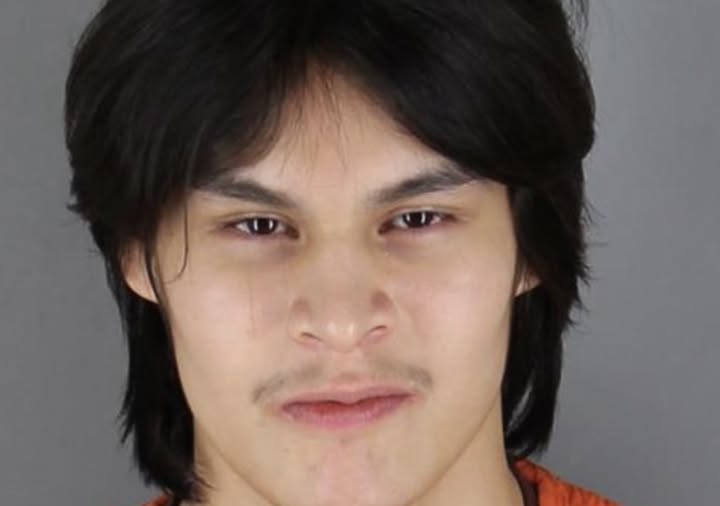Dominic Burris: A Tragic Incident and the Aftermath of a Punk Concert Shooting
On a fateful night 18 months ago, the city of Minneapolis was rocked by an event that would forever alter the lives of many. Dominic Burris, at just 17 years old, opened fire at the “Nudieland” punk concert venue, killing 19-year-old Nicholas “August” Golden and injuring several others. The violence, which took place in a space meant for self-expression, music, and community, shattered the sense of safety that many concertgoers took for granted. The shooting, which left an indelible mark on Minneapolis, the local punk community, and the families affected, has now led to a guilty plea by Burris, who faces a lengthy 23-year sentence for his actions.
The Night of the Tragedy
It was a night like any other at “Nudieland,” a popular punk music venue in Minneapolis, where bands and fans came together to celebrate music and their shared love for the punk rock scene. The venue had long been a sanctuary for individuals who felt out of place in mainstream society, a space where people could be themselves without judgment. On this particular night, however, that safe space would be irreversibly marred by violence.
Dominic Burris, a teenager known to some in the community but largely unnoticed by others, entered the venue with an intent that no one could have predicted. In the midst of the concert, he suddenly opened fire, shooting indiscriminately into the crowd. The chaotic scene that followed was one of panic, confusion, and fear. People scrambled for cover, trying to escape the violence that had shattered the sense of peace that once existed in that space.
Nicholas “August” Golden, a young man known for his passion for punk music and his love for his community, tragically lost his life in the attack. Several others were injured, some severely, as they found themselves caught in the crossfire. The shooting left a deep scar on the Minneapolis punk community, an event that could never be undone. It also left the families of those affected struggling with the emotional and physical aftermath of that terrifying night.
The Investigation and Aftermath
The investigation that followed the shooting was both complex and harrowing. Law enforcement and detectives worked tirelessly to piece together what had happened, and the events leading up to the tragedy. Burris was quickly identified as the shooter, and over the next several months, it became clear that he had acted alone.
What motivated Burris to carry out such a violent act remained a topic of investigation, and several theories emerged, from personal grievances to the possibility of mental health issues that had gone unnoticed. The exact motivations behind the shooting were difficult to pin down, and interviews with those who knew Burris painted a picture of a troubled young man, someone who had struggled with feelings of isolation and anger for much of his life. He was not a stranger to law enforcement, and his history of behavioral problems suggested that he was someone who might have been on a path toward violence long before that night.
The punk community, already accustomed to being seen as outsiders by society, now had to reckon with the fact that one of their own had turned to violence. The shooting prompted difficult conversations about safety at music venues, the state of mental health services for young people, and the need for better support systems for individuals struggling with emotional distress.
Dominic Burris: A Troubled Past
Dominic Burris, at the time of the shooting, was a 17-year-old high school student. While he was not a well-known figure in the local punk scene, his presence in the crowd that night was one that would haunt the community forever. Early reports painted him as a troubled teenager, someone who had long struggled with mental health issues and had a history of behavioral problems.
Burris was reportedly a loner who had difficulty fitting in with his peers. He had often been the subject of bullying and had few close friends. His family life, too, was complicated. Though specific details about his upbringing remain private, it was clear that Burris faced challenges at home that may have contributed to his struggles. His relationship with his parents and siblings was described as distant, and his feelings of alienation seemed to grow over time.
At school, Burris had a reputation for being quiet and withdrawn. Teachers and classmates had noted his occasional outbursts and signs of aggression, but no one could have foreseen the violent act he would eventually commit. The lack of intervention and support for his mental health was cited by some as a potential contributing factor to the tragedy.
In the aftermath of the shooting, it was revealed that Burris had been struggling with undiagnosed mental health issues for much of his life. Reports suggested that he had made attempts to seek help, but those efforts had often been met with limited success. In hindsight, many wondered if there were missed opportunities for intervention that could have prevented the tragedy.
The Legal Proceedings
After the shooting, Dominic Burris was arrested and charged with multiple counts of murder and attempted murder. His arrest shocked many, especially those who had known him before the shooting. The legal process that followed was lengthy and difficult, as prosecutors sought justice for the victims and their families.
This week, Burris pleaded guilty to all charges related to the shooting, including the murder of Nicholas Golden and the injuries inflicted on the others present that night. His guilty plea brought some closure to the families and the community, though it did little to heal the deep wounds left by the tragedy.
Burris now faces a 23-year prison sentence, a punishment that many view as both a form of justice and a sobering reminder of the consequences of violence. While some have argued that he is a young man with a troubled past who may deserve a second chance, others feel that the gravity of his actions must be met with a long sentence to ensure that he is held accountable for the lives he shattered.
The Community’s Healing Process
In the wake of the shooting, the Minneapolis punk community has struggled to heal. The trauma of that night still lingers in the minds of those who were there and in the hearts of those who lost friends, family members, and loved ones. But despite the pain, the community has come together in ways that reflect the resilience and solidarity for which the punk scene is known.
Vigil services, community outreach programs, and fundraisers have been held to honor the memory of Nicholas “August” Golden and the other victims. Music has continued to be a form of healing for many, as the punk community works to reclaim the space that was once tainted by violence. Through these efforts, the community hopes to rebuild, to show that love, music, and togetherness can overcome even the darkest of moments.
Conclusion: The Unanswered Questions
The shooting at “Nudieland” will always be a dark chapter in the history of Minneapolis. Dominic Burris’ actions will forever be tied to the tragedy of that night, and the lives lost and altered because of them will never be forgotten. As Burris now faces a lengthy prison sentence, the question remains: Could this tragedy have been prevented? Could earlier intervention have helped Dominic Burris before he became capable of such violence?
These questions may never be fully answered, but they serve as a reminder of the importance of mental health awareness, intervention, and the need for greater support for troubled youth. As the victims’ families continue to mourn and the community heals, the hope is that this tragedy will inspire a greater focus on preventing future acts of violence and providing support to those in need before it’s too late.

